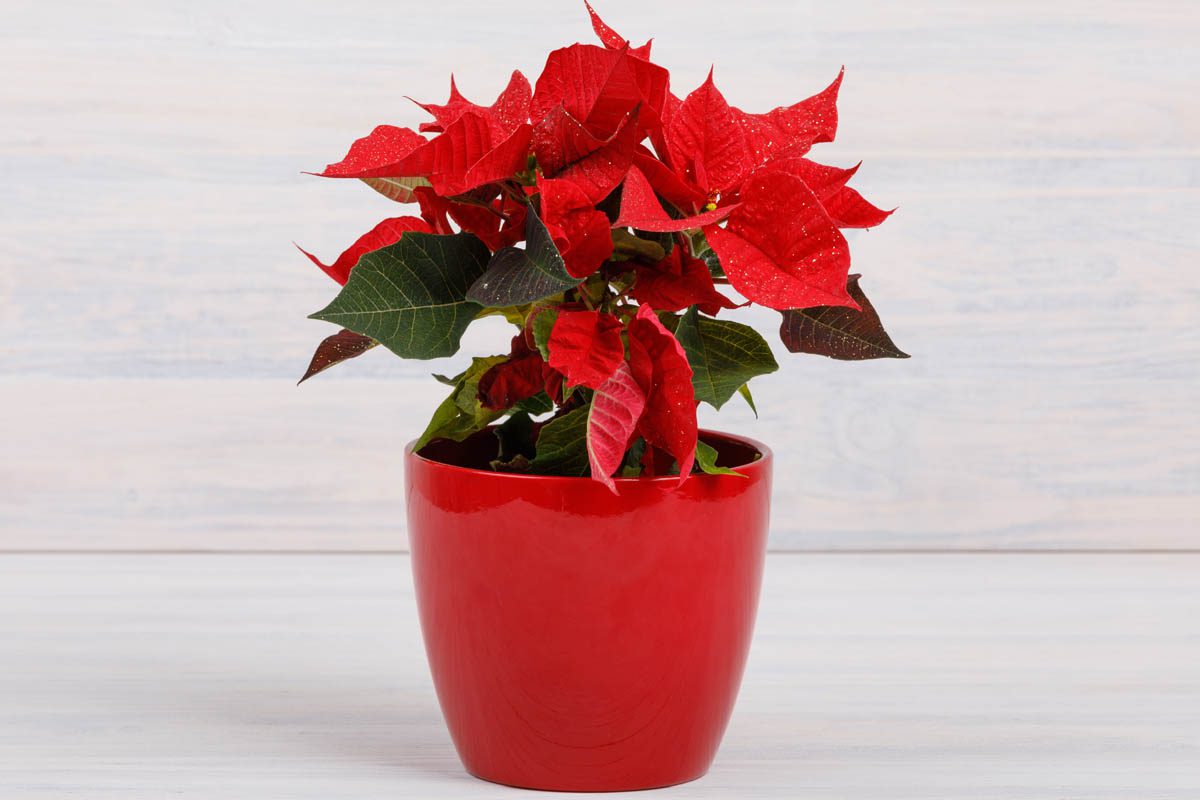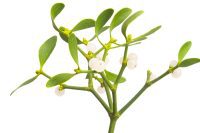Poinsettia is mildly toxic to dogs, the toxic principles are diterpenoid euphorbol esters and saponins which cause mild dermal and gastrointestinal irritation.
What is poinsettia?
| Family | Araceae |
| Botanical name | Euphorbia pulcherrima |
| Common names | Poinsettia, Christmas flower, Winter rose, Painted leaf, Lobster plant, Crown of the Andes, Flower of Christmas Eve |
| Leaf colour | Green |
| Flower colour | Red, pink, white |
| Toxicity | Toxic to dogs |
| Toxic properties | Diterpenoid euphorbol esters and saponins |
| Toxic parts | All parts |
| Level of toxicity | Mild |
Poinsettia is a perennial shrub native to southwestern Mexico and Guatemala. The common name is derived from physician and botanist Joel Roberts Poinsett (March 2, 1779 – December 12, 1851). Joel was the first Minister to Mexico from 1825 to 1829 and while serving, found the poinsettia growing near Taxco and sent cuttings to South Carolina in 1828.
The red, pink and white ‘flowers’ are actually modified leaves known as bracts, while the insignificant true flowers are yellow. Aztecs called poinsettia ‘Cuetlaxochitl’ which means brilliant flower. The red bracts were used to dye textiles, while the sap helped to reduce fevers and when applied to the breasts of lactating women is said to increase milk supply.
Spanish Franciscan priests in Mexico began using poinsettias in the Fiesta of Santa Pesebre nativity procession. Poinsettias begin to bloom in October, which signals the impending arrival of Christmas. The red poinsettia bracts represented the blood of Christ. Californian poinsettia farmer Paul Ecke Sr. sold poinsettia flowers during winter. Paul Ecke Jr. would further promote the poinsettia by providing live plants as displays for talk shows and women’s magazine displays at Christmastime.
Toxicity
The toxic principles are diterpenoid euphorbol esters and saponins which cause dermal and gastrointestinal irritation. All members of the euphorbia family, which includes poinsettia, contain diterpenoid esters which are chemical irritants. The effects and severity can range considerably between euphorbia species. Saponins are bitter-tasting, amphiphilic glycosides of steroids and triterpenes which protect the plant against bacteria, fungi, parasites, insects and herbivores. Ingestion of saponins can cause gastrointestinal upset, however, in most cases, symptoms are self-limiting.
Clinical signs
The bitter taste of poinsettia should be enough to deter dogs from consuming a large quantity of the plant.
- Oral irritation
- Drooling
- Loss of appetite
- Nausea
- Vomiting
If symptoms of poinsettia ingestion do develop, they should resolve within 12-24 hours.
First aid for poinsettia ingestion
If your dog has consumed poinsettia, remove any remaining plant matter from the dog’s mouth if it is safe to do so, and offer a drink of something tasty such as milk or onion and garlic-free stock. Watch for signs of gastrointestinal distress and contact the dog’s veterinarian if they develop. Most veterinarians will recommend a wait-and-see approach as long as symptoms are mild. Feed a bland diet of boiled chicken and rice to rest the gastrointestinal tract.
What is the prognosis for poinsettia ingestion in dogs?
The toxicity of poinsettia is frequently over-stated, and ingestion is unlikely to kill a dog. The prognosis for dogs who have ingested poinsettia is excellent.
Can you have poinsettias around pets?
Due to the low level of toxicity, poinsettias are generally safe around pets as long as they don’t show an interest in consuming large volumes of the plant. If you have an especially curious dog, move the plant to a location the dog cannot access.
Julia is a writer and landscape consultant from Wollongong with a love of horticulture. She had been an avid gardener for over 30 years, collects rare variegated plants and is a home orchardist. Julia is passionate about learning and sharing her knowledge of plant propagation and plant toxicology. Whether it’s giving advice on landscape projects or sharing tips on growing, Julia enjoys helping people make their gardens flourish.




